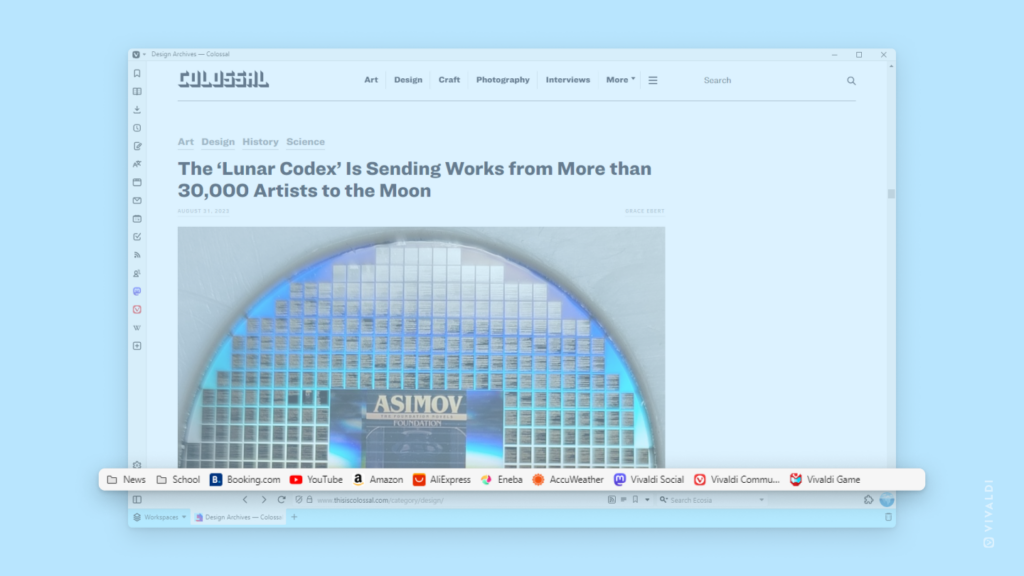Desktop Tips
Tip #366
October 12, 2023
Never miss an event by setting default reminders for your events in Vivaldi Calendar.
So you created an event in your Vivaldi Calendar, but still missed it because you didn’t check your Calendar at the right time? To prevent this from happening again, set reminders for your events. You can add one manually for each event or you can set default reminders for all events.
To set default reminders:
- Go to Settings > Calendar > Calendar Editing.
- Choose how much before you should be reminded of upcoming events.
You can set separate reminders for regular and all-day events.
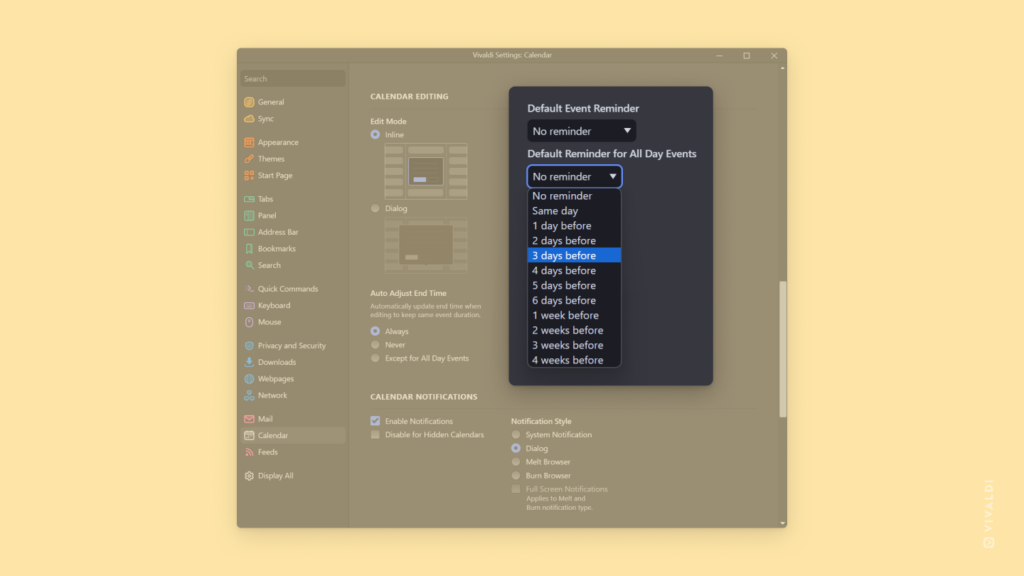
Tip #365
October 11, 2023
Add Custom Search Engines to Vivaldi on desktop manually in the browser’s Settings.
Vivaldi comes with a selection of Search Engines, many of which generate revenue for us, which helps us keep doing what we’re doing. But you can also add your own Search Engines to Vivaldi, such as scientific journal databases, favorite shopping sites, dictionaries, news sites, and almost any other website that has a search field on it.
We shared a quick way of adding new Search Engines in Tip #74. That option doesn’t work on every website, though, so another option is to add one manually.
To add new Search Engines manually:
- Do a search on the website you want to add.
- In the search results page link, replace the search keyword with
%sor%S.
For example,https://help.vivaldi.com/?s=workspaces>>>https://help.vivaldi.com/?s=%s. - Copy the link.
- Go to Settings > Search > Search Engines.
- Click on ➕ Add Search Engine below the list of existing Search Engines.
- Give the new Search Engine a name and a short nickname.
- Paste the link in the URL field.
Now you can type the Search Engine Nickname followed by your search keyword(s) in the Address Field and get to results much faster.
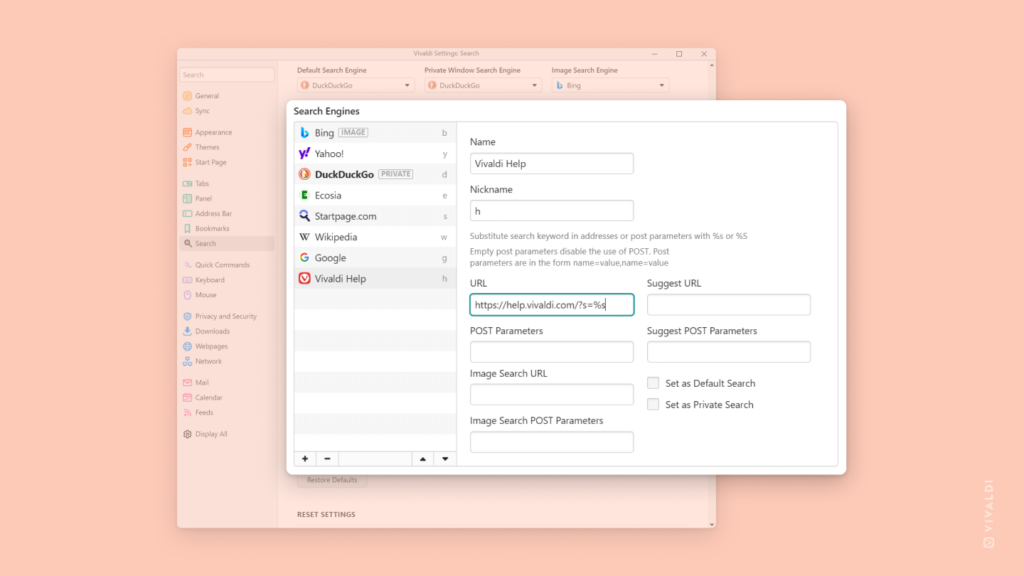
Tip #364
October 10, 2023
Create a schedule to change Themes automatically throughout the day.
Whether just for some variety or to give subtle hints about the time to yourself, you can make your Vivaldi browser on desktop switch the themes automatically according to your set schedule.
To schedule Themes:
- Go to Settings > Themes > Theme Schedule.
- Enable “Manual Schedule”.
- Adjust the timeslot lengths by using the sliders between them.
- Click on “Add” to create additional timeslots.
- Select a theme for each.
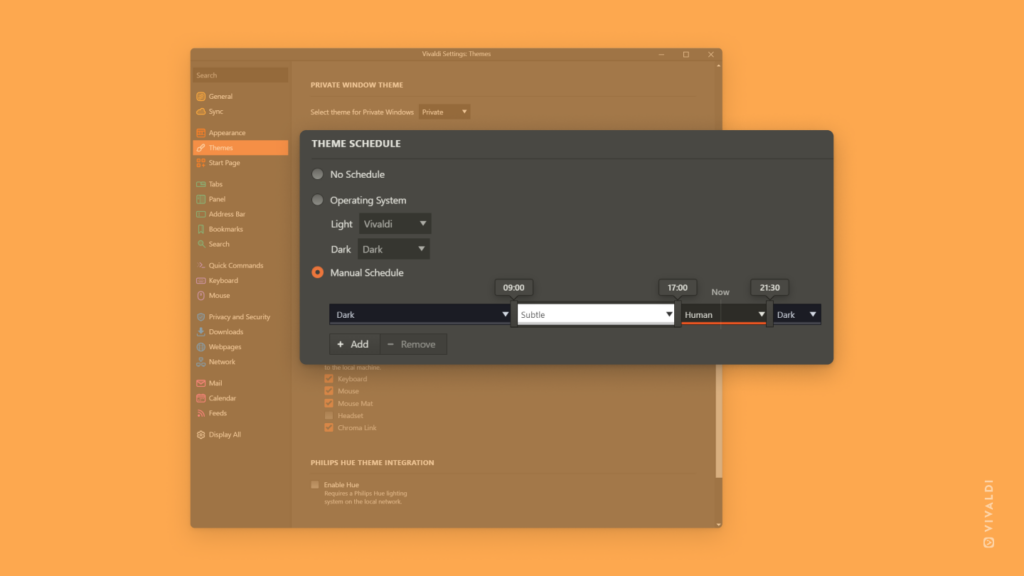
Tip #362
October 6, 2023
Edit a new bookmark in the bookmark dialog right after adding it.
There are over 10 different ways you can add new Bookmarks in Vivaldi (see them all in Tip #137). If you’re in the habit of editing bookmarks’ titles, descriptions, nicknames, and/or folders they’re in, you can open the bookmark dialog to do so. For example, if you added a bookmark from the button on the Address Bar, click it again to open the dialog, or use the bookmarking Keyboard Shortcut a second time.
In case you edit the bookmark right after adding it more often than not, you can make Vivaldi open the dialog as you’re adding the new bookmark. To do that:
- Go to Settings > Bookmarks.
- Enable “Always Open Bookmark Dialog”.
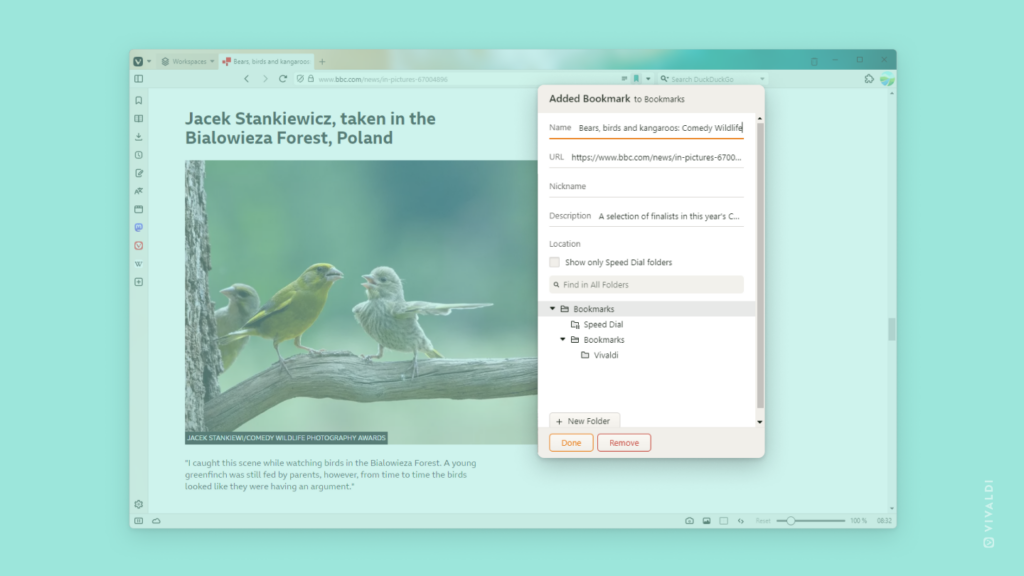
Tip #359
October 3, 2023
Press Ctrl + Enter to send a message in Vivaldi Mail.
When you already have your fingers on the keyboard when typing a message in Vivaldi Mail, it’s easier to use a Keyboard Shortcut to send the email than to look for the “Send” button on a toolbar.
When you’re ready to send the email, just press Ctrl + Enter (Cmd + Enter on macOS). It’ll also close the composer, allowing you to move on to the next message or continue browsing.
Discover more Mail shortcuts in Settings > Keyboard > Mail or on Vivaldi Help.
Tip #354
September 25, 2023
Get your Extensions in order with drag and drop.
Extensions on your browser toolbar appear in the order you add them, but you can rearrange them easily.
To reorder Extensions:
- Hold down the
Ctrl/⌘* key on your keyboard. - Drag an extension’s toolbar button to change its location among your Extensions.
On macOS, release the ⌘ key before you release the mouse button.
Tip #353
September 22, 2023
Save everything in one place and skip the Downloads dialog.
Some have set up a meticulous folder system for all their files, others save everything in one place and maybe sort things out later. If you’re in the latter camp, you can enable a setting in Vivaldi that lets you skip the Downloads dialog that asks you where you want to save each file.
To skip the Downloads dialog:
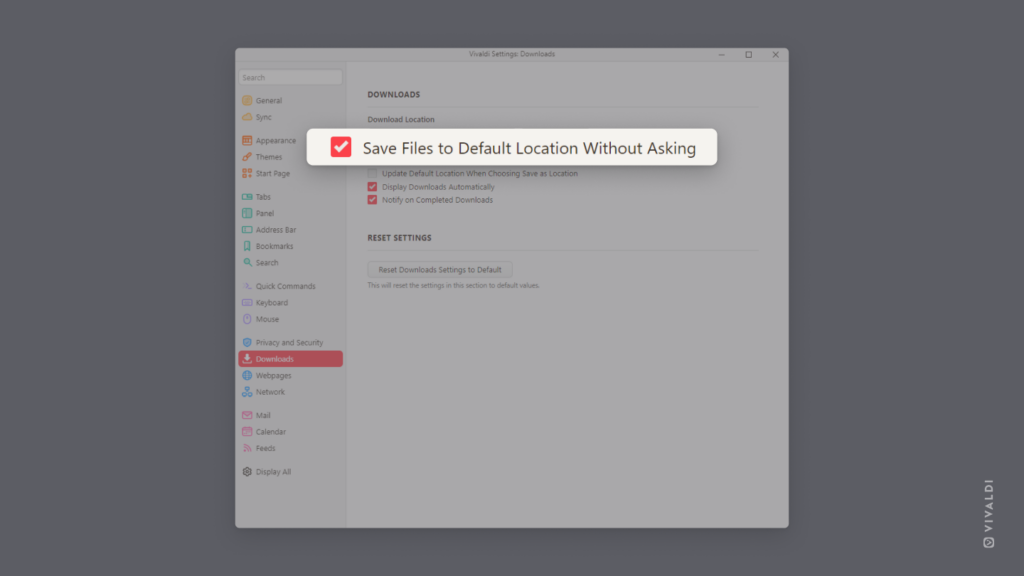
Tip #352
September 21, 2023
Take the odd one out by removing a single tab from a Tab Stack.
Grouping tabs into Tab Stacks is a great way to keep your tabs neat and organized. But what to do with a tab that has ended up in the wrong stack? Use one of the following ways to remove a single tab from a Tab Stack:
- Right-click on the tab and select “Remove from Tab Stack” from the context menu.
- Drag the tab off the Tab Bar and move it back as a top-level tab.
- Drag the tab out of the stack in the Windows Panel.
- While you have the tab open, open Quick Commands and type in “Remove from Tab Stack”.
- If it’s a frequent occurrence, create a Keyboard Shortcut or a Mouse Gesture for the action.
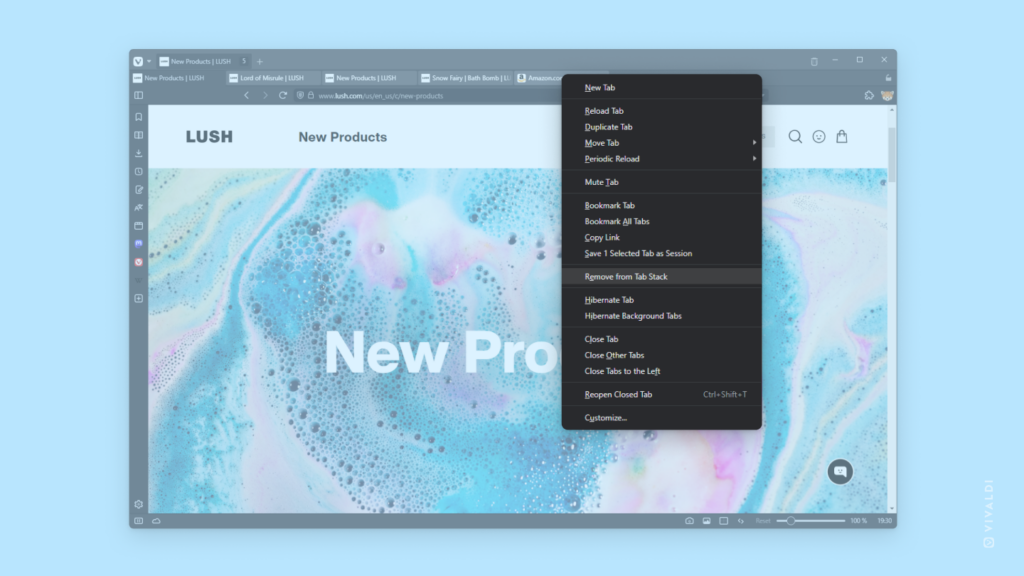
Tip #350
September 19, 2023
Accompany Calendar notifications with a catchy sound effect.
In Tip #205 we showed you how to add some fun visuals to your upcoming Calendar tasks and events. Visual reminders are great, but sometimes audio cues are needed.
To pick a sound for Calendar notifications:
- Go to Settings > Calendar > Calendar Notifications > Notification Sound.
- Choose between Ding, Rooster, or Tada sounds. Pick None if you prefer silent notifications.
You can also adjust the notification volume.

Tip #348
September 15, 2023
Delete all Cookies when you close the browser.
Cookies can be useful. They can keep you logged into accounts, save your language preferences, and more, but they can also be used to track you. To curtail the latter, you can have Vivaldi delete all cookies stored in the browser on exit.
To update your Cookie preferences:
- Go to Settings > Privacy and Security> Cookies.
- Select “Session only”.
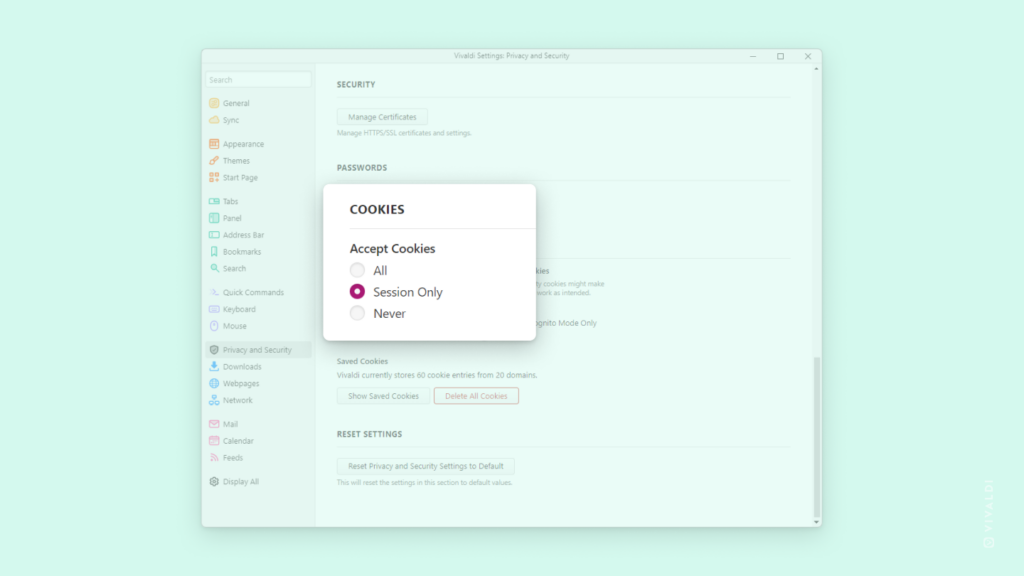
Tip #346
September 13, 2023
Search copied text in a new tab with a single shortcut.
Combining actions often used one after another into a single Command Chain can help you streamline your browsing. One of the many Command Chains you can create is searching for text you have copied to the clipboard in a new tab. That way you can skip opening a new tab, focusing on the address field, pasting your search term in it, and executing the search. It’s all done with the use of a single shortcut or click of a button.
To create the Command Chain:
- Go to Settings > Quick Commands > Command Chains.
- Click on
 “Add Command Chain” below the list of existing chains.
“Add Command Chain” below the list of existing chains. - Give the new chain a name
- Add the following commands:
- New Tab,
- Delay (with the parameter value, for example, 100),
- Focus Address Field,
- Paste and Go.
- Go to Settings > Keyboard and/or Settings > Mouse, look for the new chain in the list of commands, and create a shortcut for it.
In addition, you can open the Toolbar Editor and add the new chain as a button on one of the browser toolbars.
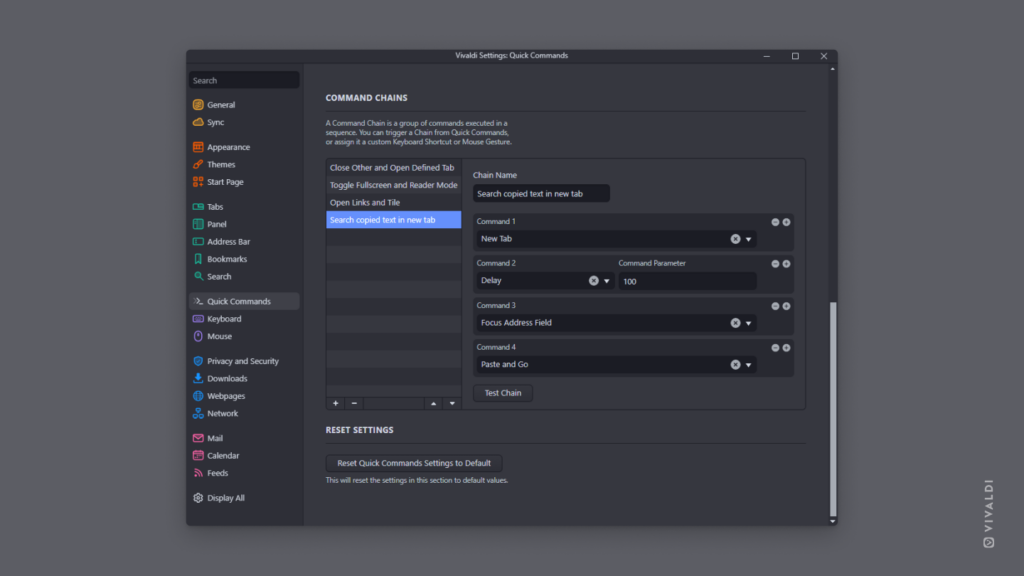
Tip #345
September 12, 2023
Move the Bookmark Bar to the bottom of the window together with the Address and Tab Bar.
Do you prefer to have your important toolbars on the lower side of the browser window? Vivaldi’s flexible customization options allow you to move the toolbars, including the Bookmark Bar, to many different locations.
To move the Bookmark Bar to the bottom:
- Go to Settings > Bookmarks > Bookmark Bar > Bookmark Bar Position.
- Select “Bottom”.
You can also move the Address and Tab Bars to the bottom of the window from Settings > Address Bar and Settings > Tabs, respectively.
